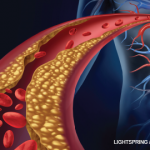
Office Visit with Sacroiliac Joint Injection
A 72-year-old female patient returns to the office for a routine, follow-up visit for sacroilitis and ankylosing spondylitis. The patient reports that her lower back is stiff and has been swollen for the past three weeks. She is currently on celecoxib and ranitidine. The patient also mentioned having abdominal pain and nausea after she takes her celecoxib dose.
The rheumatologist takes a detailed history from the patient. On examination, the patient is alert and oriented. Her vital signs are normal, height 5 feet 7 inches, weight 140 pounds, and temperature 98º. Her head, eye, ear, nose, and throat exams are normal. There is no lymphadenopathy. Her lungs are clear. Her heart is at a regular rate and rhythm, no murmurs or friction rubs, also there are good peripheral pulses. Her abdomen is soft and nontender, with no mass or hepatosplenomegaly. The patient’s physical examination is remarkable for a large effusion sacroiliac joint (SI).
The physician decides to give the patient a SI injection performed via computed tomography (CT) guidance. The physician explains therapeutic options to the patient, including risks and benefits, and performs the SI injection with 10 mg of triamcinolone to the lower back region. The patient is taken off celecoxib. A new prescription for pain is prescribed and the patient is given discharge instructions on post-SI injection care and follow-up.



